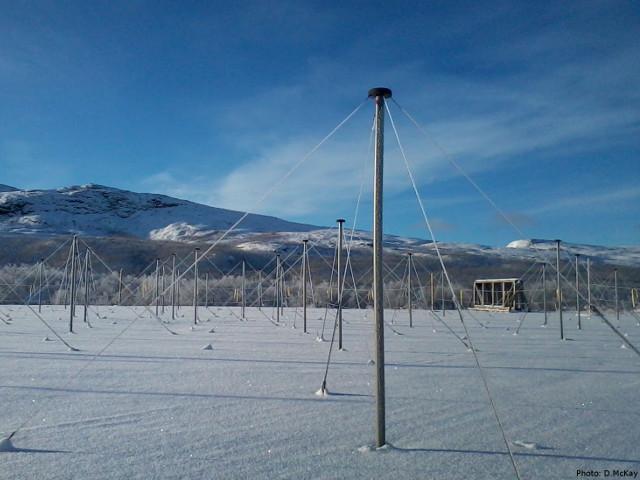Radio-absorption images of the aurora
The aurora is mostly caused by high-energy particles streaming down into the upper layers of the atmosphere. These particles not only result in the spectacular Northern Lights that we see at high latitudes, but they also affect the way that the ionosphere absorbs radio waves.
Radio waves are being emitted throughout our galaxy. In fact, we are surrounded by a haze of radio signals from all directions. So, using a radio telescope, we can make images of where these radio waves are being absorbed. In doing this, we can then map where the aurora are.

Of course, aurorae have been studied for many years optically using cameras. But these types of observations are hindered by clouds are completely thwarted by sunshine. In the Arctic summer, the midnight sun persists 24 hours per day. Daylight, cloudy weather and even twilight make conventional auroral observations impossible. As a result, most of the year is beyond the reach of this conventional method, making seasonal analysis of auroral phenomena difficult.
Using the radio technique avoids these limitations and makes it possible to observe all year round. The telescope we use is the Kilpisjärvi Atmospheric Imaging Receiver Array (KAIRA), located in Arctic Finland, just over the border from Troms. Unlike some radio telescopes, which use large parabolic dish antennas, KAIRA is a phased array - meaning that it is made up of many smaller antennas which do not move. This field of antennas is able to map radio waves across the entire sky and thus also map the radio absorption (and hence the aurorae)
References
[1] McKay, et al. "All-sky Interferometric Riometry", submitted to Radio Science, 2015.
[2] McKay-Bukowski, et al. "KAIRA : Kilpisjärvi Atmospheric Imaging Receiver Array - System Overview and First Results", IEEE Trans. Geoscience & Remote Sensing, 53, 3, 1 440-1 451 , 2015
[3] McKay, D., Partamies, N., Vierinen, J., "Pulsating aurora and cosmic noise absorption associated with growth-phase arcs", Annales Geophysicae 36, 59-69, 2018
KAIRA was funded by the University of Oulu and the FP7 European Regional Development Fund and is operated by Sodankylä Geophysical Observatory with assistance from the University of Tromsø.
Members involved: